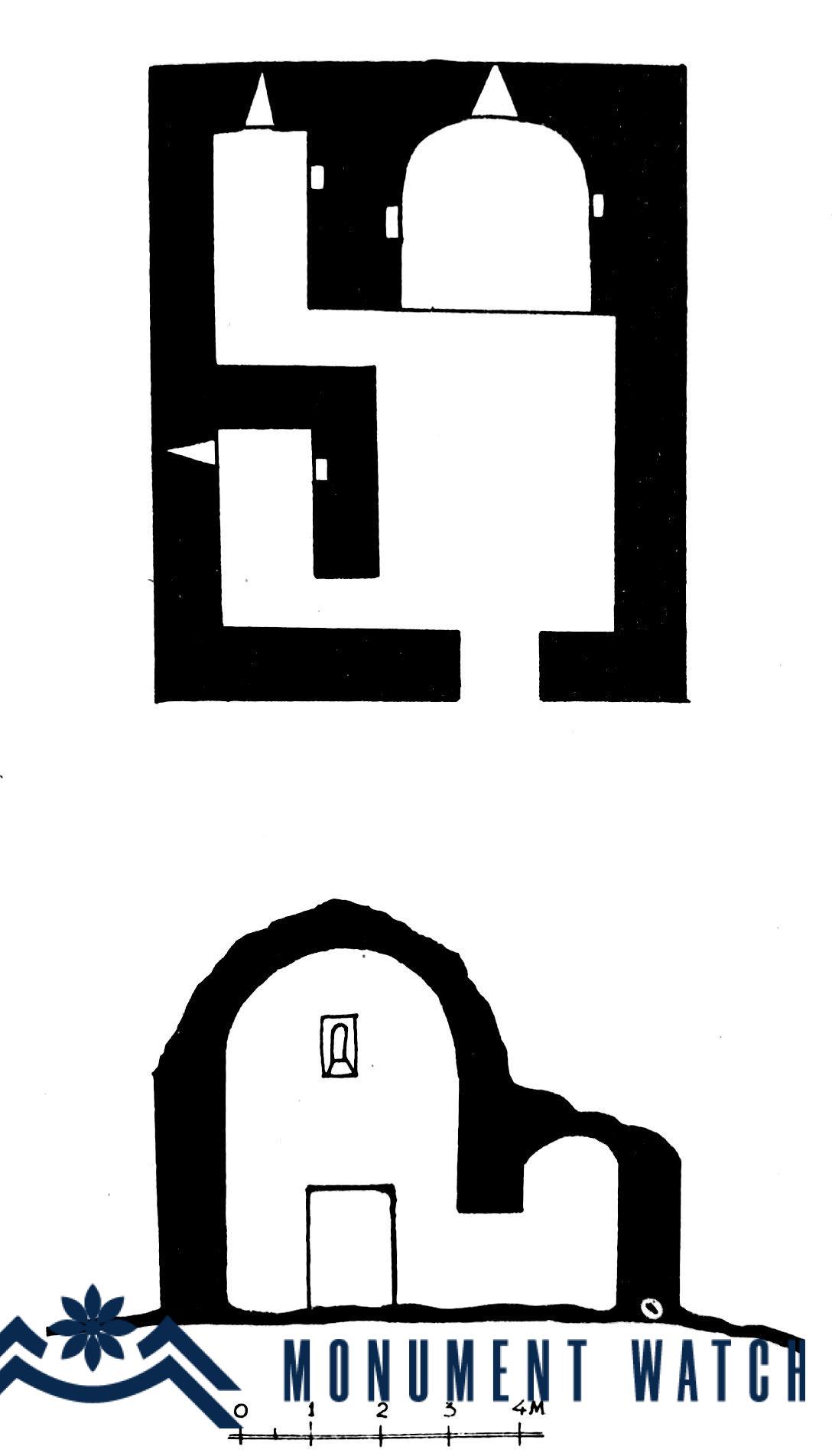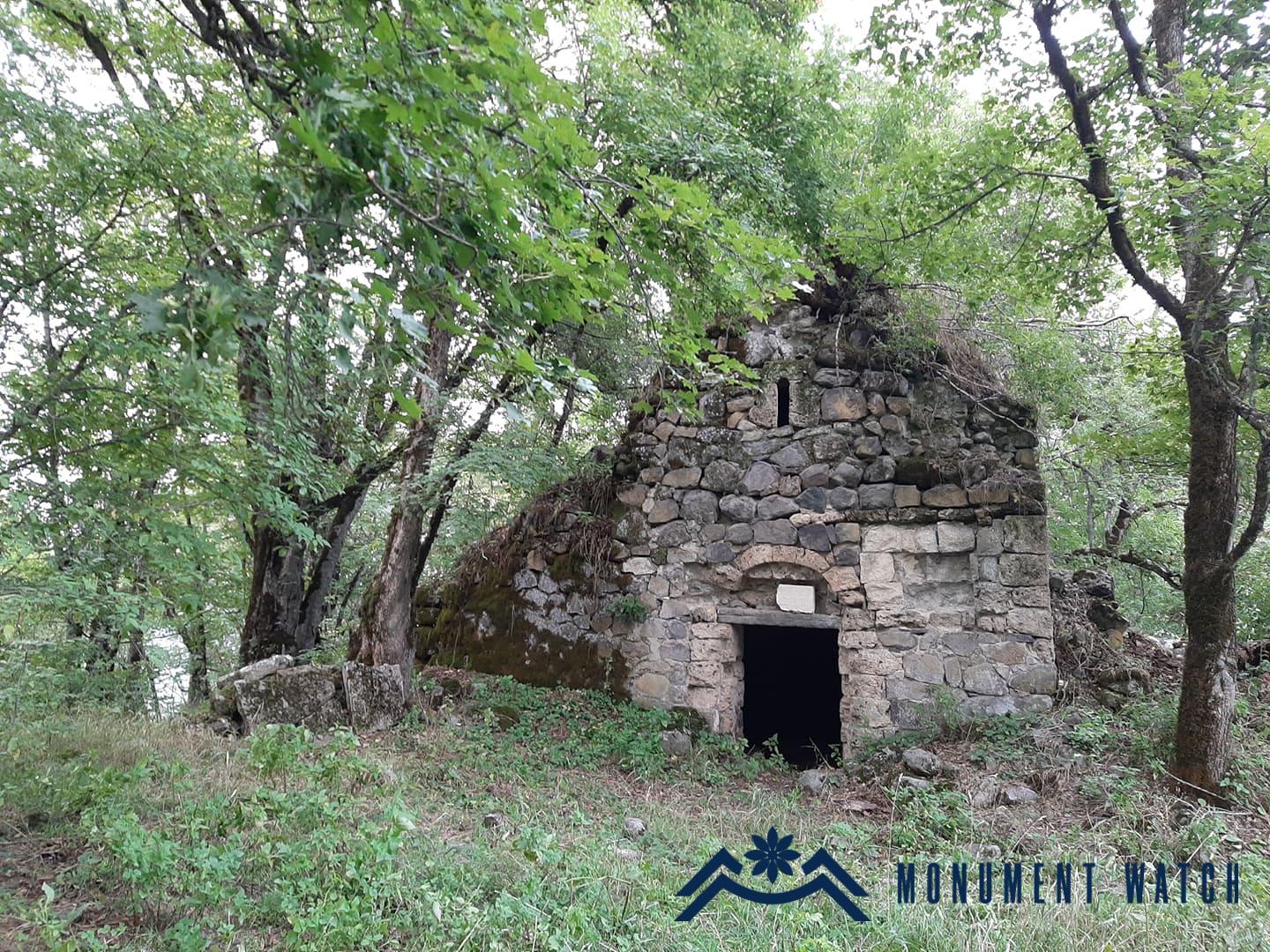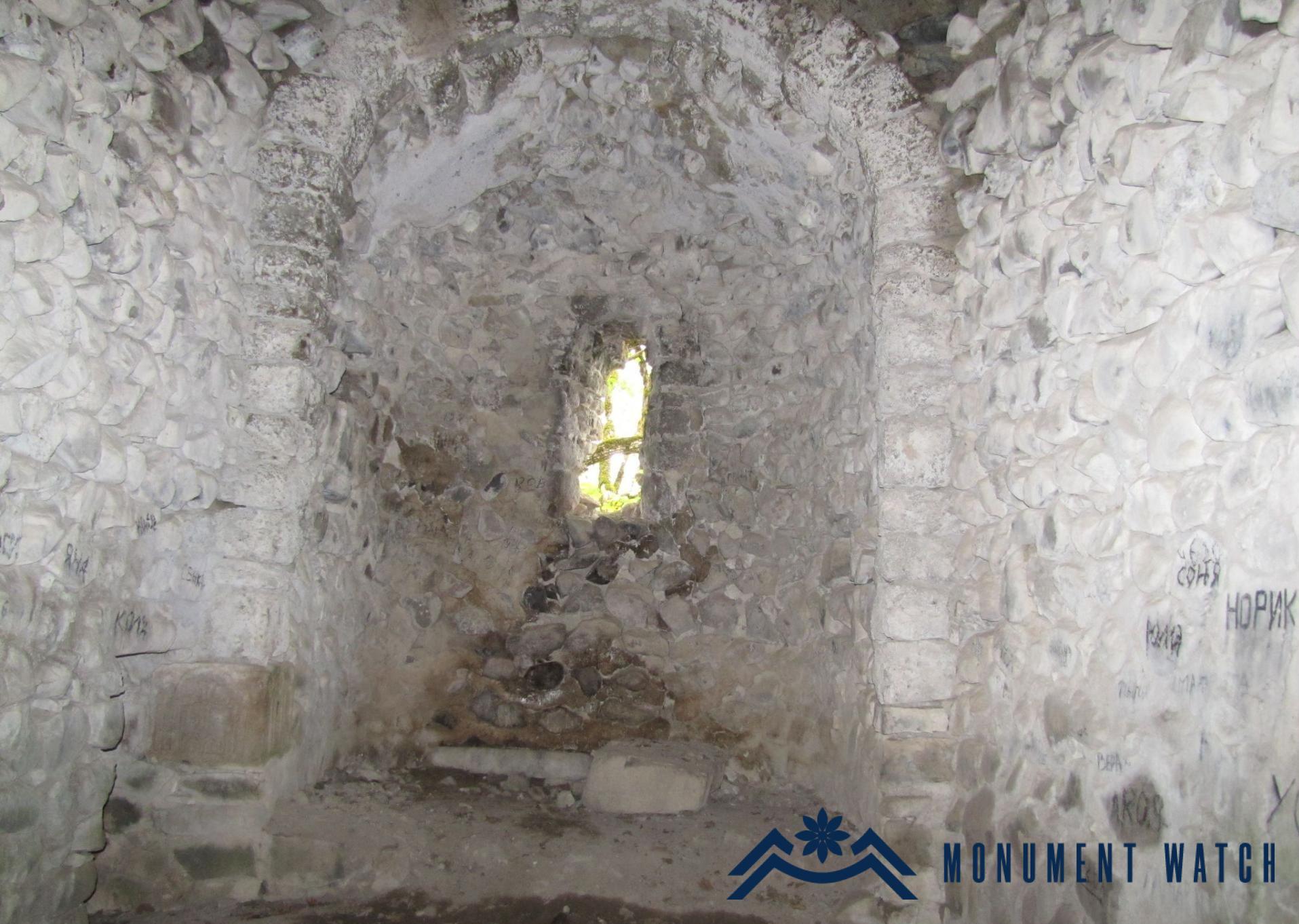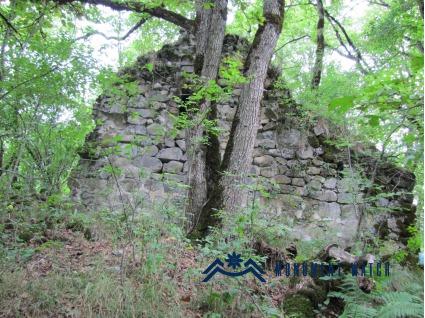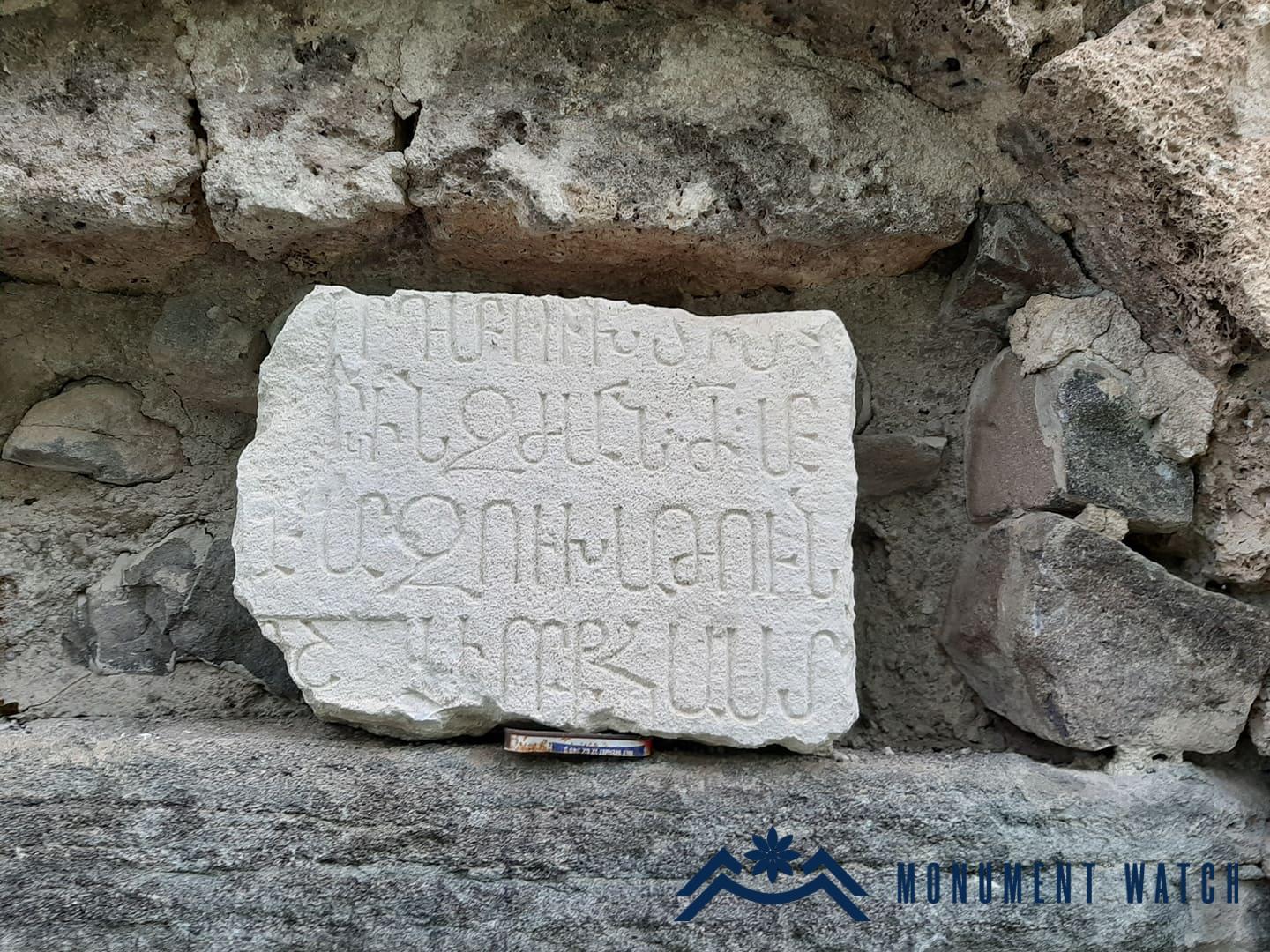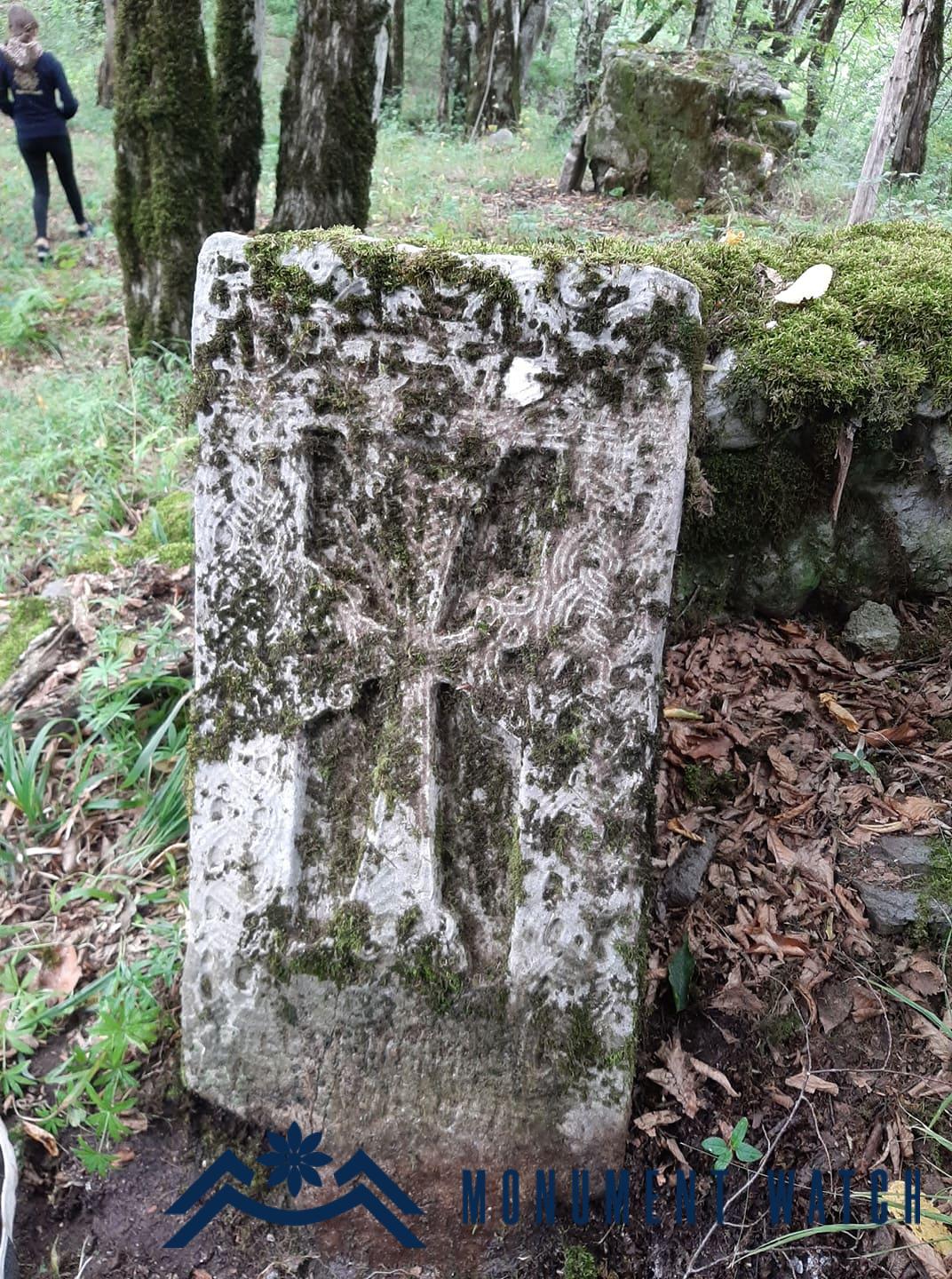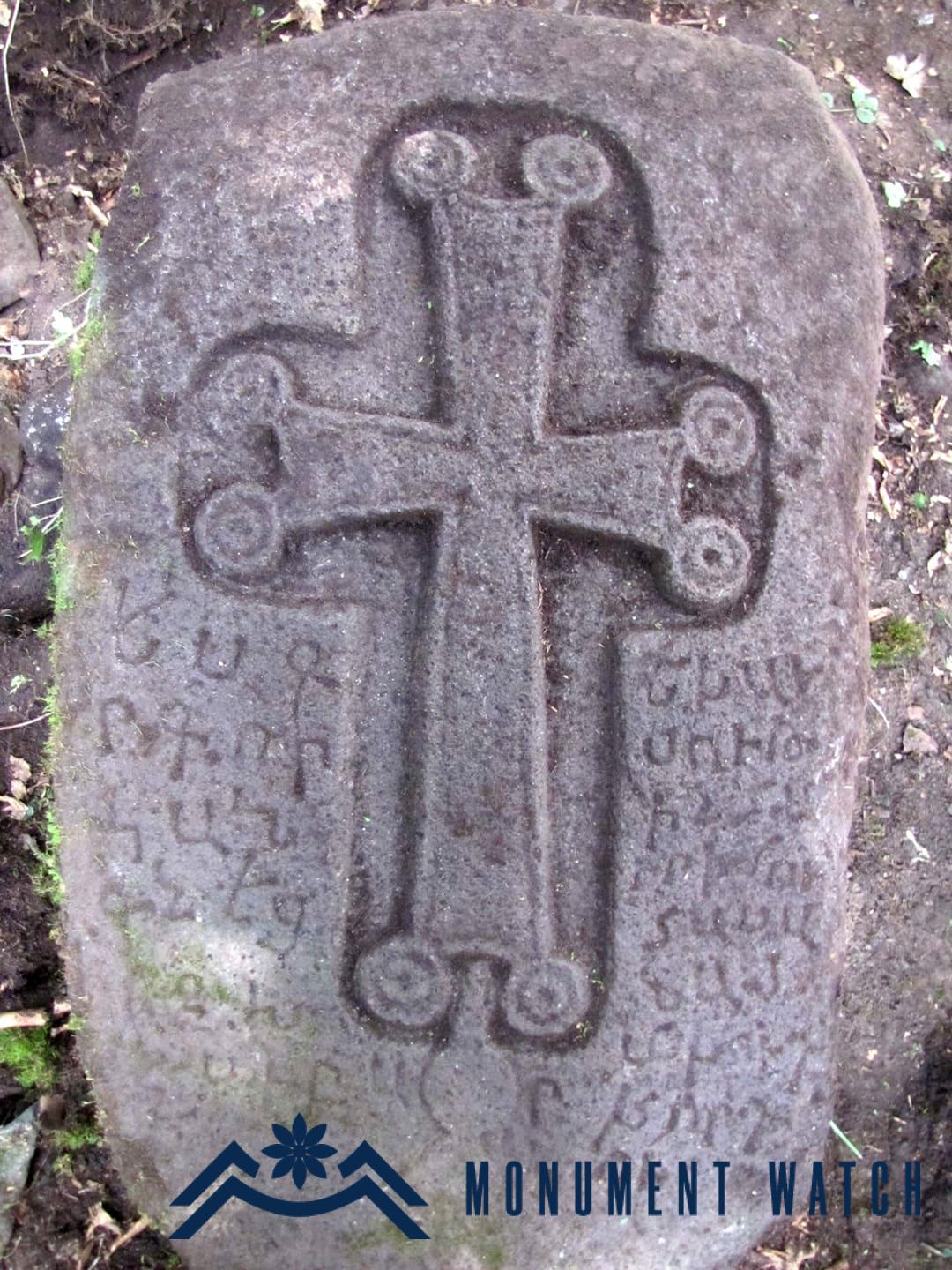The Otskavank
Location
The monastery is located northwest of the village of Patara in the Askeran region of the Republic of Artsakh, situated on a wooded hill. It is currently under Azerbaijani occupation.
Historical overview
There is no historical information available about the church. Some details can be gleaned from a few fragmentary lithographic inscriptions, which are unfortunately incomplete. Based on these inscriptions, it can be assumed that the monastery was built in the 12th-13th centuries (Karapetyan 1984, 83). Makar Barkhudaryants briefly mentions the monastery structures in his work (Barkhutareants 1985, 158).
Architectural-compositional examination
The monastery comprises a church, a half-ruined refectory to the west of the church, partially ruined and destroyed monastic cells, structures of economic significance, and a cemetery.
The church is a small, single-nave vaulted hall with a western entrance and an eastern semicircular tabernacle. Two sacristies are attached to the north side of the church, with entrances opening from the hall (Fig. 1).
The church, like all the buildings in the monastery, is constructed from small and medium-sized rough stones bound with lime mortar (Figs. 2, 3). In the lower row of the church's high altar, the pedestal of an early Christian monument is embedded (Fig. 4).
A part of the donation inscription from the early 13th century, given by Arzukhatun, the princess of Verin Khachen and wife of Vakhtang Hasanyan, has been preserved: "Holy Monastery...in memory...10 liturgies...Arzukhatun...who established..."
It appears that Arzukhatun made a donation to the monastery and received ten annual liturgies in memory of her relatives (Fig. 5). The monastery, located within the territory of the Hasan-Jalalyan authority of Inner Khachen, must have been sufficiently renowned for the ruler of the neighboring authority to visit and make a donation. This inscription stone is part of a larger inscription on the west facade, spanning several white, hewn, and polished stones. Researcher Samvel Karapetyan notes that currently two of these stones are broken and displaced (Karapetyan 1984, 83).
To the west of the church lies the historical cemetery, where several sculptural khachkars and fragments thereof have been preserved (Fig. 6, 7). Some of these khachkars retain fragments of inscriptions:
"I, (S)mpat and Susa, erected a holy cross over the grave on [specific day]." Another inscription reads, "I, Avetis, son of Hasan, raised a cross over the grave." A notable inscription from these finds’ states, "I am a brave warrior" (Karapetyan 1984, 83).
In early September 2020, during cleaning work on the monastery grounds, a khachkar was discovered bearing the inscription: “I, G/rgor/, erected this cross in intercession for my father, Hasan, son of Mkhud.”
The condition before and after the war
The monastery remained undamaged during the Artsakh wars. Currently, there is no available information about its current state.
Bibliography
- Barkhutareants 1895 - M. Barkhutareants, Artsakh, Baku.
- Karapetyan 1984 - Karapetyan S., Historical-architectural monuments of Ptretsik river valley according to newly discovered inscriptions, Journal of Social Sciences, Yerevan, N 8, p. 75-86.
- Mkrtchyan 1985 - Mkrtchyan Sh., Historical and Architectural Monuments of Nagorno-Karabakh, Yerevan.
The Otskavank
Artsakh

